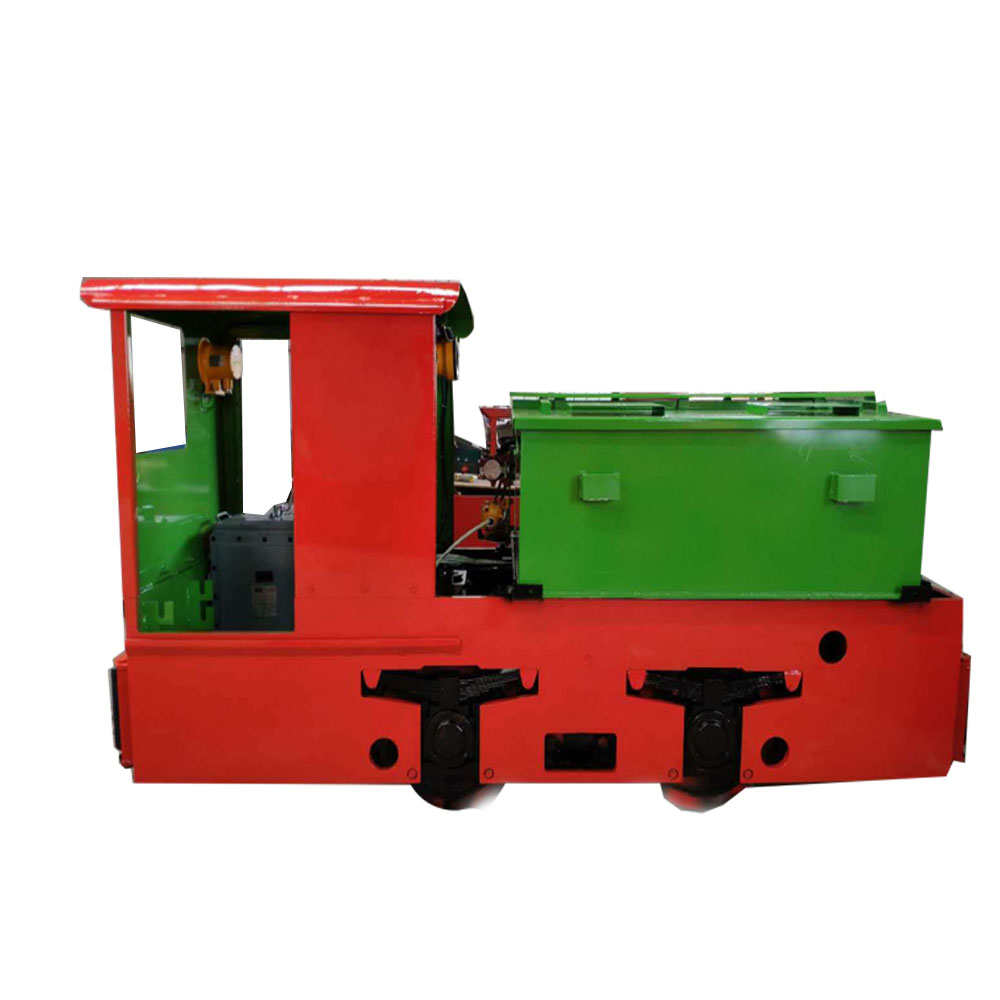How Electric Locomotives Obtain Electrical Energy To Generate Traction Power
Date:2024-01-12 Label:
Electric Locomotive
Diesel Locomotive
Underground Mining Locomotive
Trolley Locomotive
Battery Locomotive
An electric locomotive is a railway locomotive driven by electricity. It realizes traction and braking functions through an electric transmission system. This article will introduce the working principle of Underground Mining Locomotive in detail, including the power supply system, transmission system and control system.

1. Power supply system
The power supply system of the Trolley Locomotive is mainly composed of a power supply, a power collecting device and a power transmission device. The power supply can be AC or DC power supply, and the most common one is AC power supply. The current collecting device usually consists of a pantograph and a collecting wheel, which is used to contact the power supply line of the electrified railway. The power transmission device transmits electrical energy from the current collector to the main circuit of the locomotive.
2. Transmission system
The transmission system of the Diesel Locomotive is mainly composed of traction motor, gearbox and transmission shaft. The traction motor is a key component of an electric locomotive, which converts electrical energy into mechanical energy to provide traction. The gearbox is used to adjust the torque and speed of the traction electromechanical output to adapt to different traction requirements. The transmission shaft transmits the power output from the gearbox to the wheels to realize the traction function of the locomotive.
3. Control system
The control system of Underground Mining Locomotive mainly includes traction control and braking control. The traction control system is used to control the output power and torque of the traction motor to achieve acceleration, deceleration and constant speed operation of the locomotive. The brake control system is used to control the braking force of the locomotive, including resistance braking, regenerative braking and air braking.
In actual operation, the working principle of electric locomotives is as follows:
1. The power supply supplies electric energy to the power collecting device of the locomotive. The power collecting device transmits the electric energy to the main circuit of the locomotive by contacting the power supply line.
2. The main circuit transmits electrical energy to the traction motor, and the traction motor converts the electrical energy into mechanical energy to provide traction.
3. The traction control system controls the operating speed and traction force of the locomotive by adjusting the output power and torque of the traction motor.
4. The Battery Locomotive transmission system transmits the power output by the traction motor to the wheels to realize the traction function of the locomotive.
5. The braking control system realizes the deceleration and stopping of the locomotive by controlling the braking force of the locomotive.
Summarize:
The working principle of an electric locomotive mainly includes the power supply system, transmission system and control system. The power supply system is responsible for supplying electrical energy to the main circuit of the locomotive, the transmission system converts electrical energy into mechanical energy and provides traction, and the control system implements traction and braking control. Electric locomotives achieve efficient and environmentally friendly railway transportation through the coordinated work of these systems.